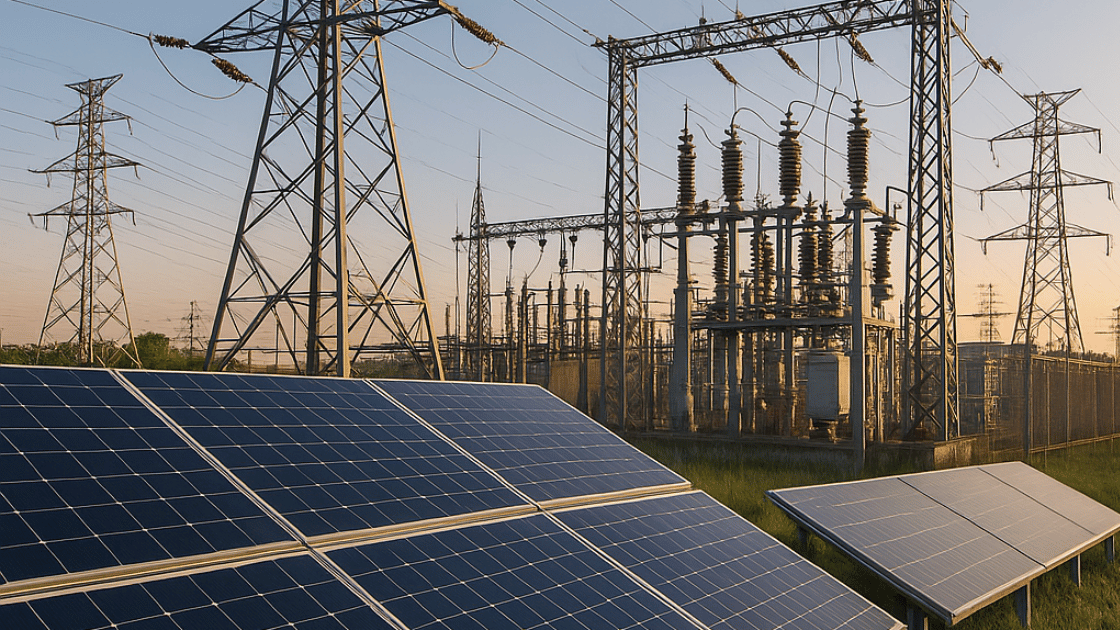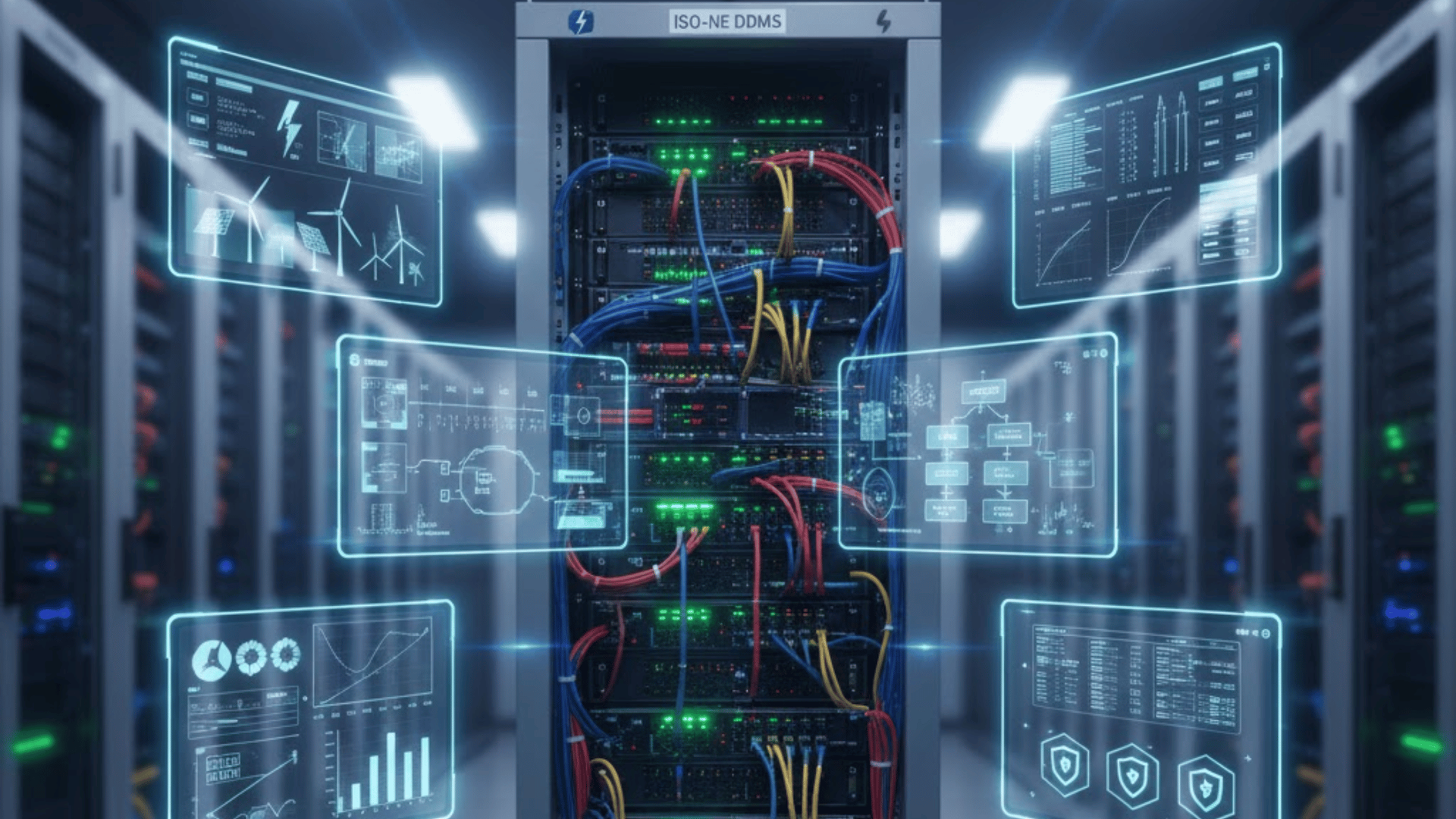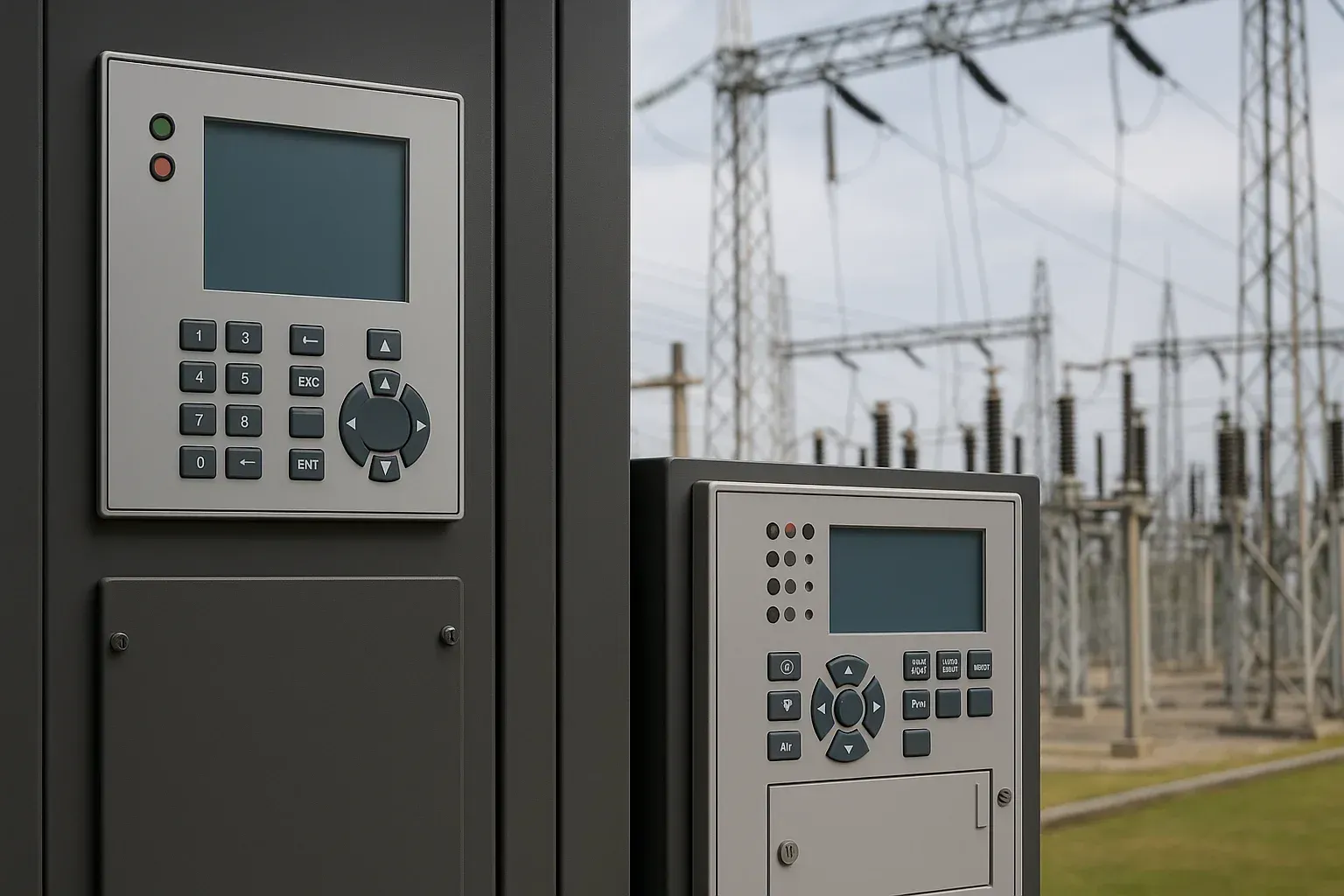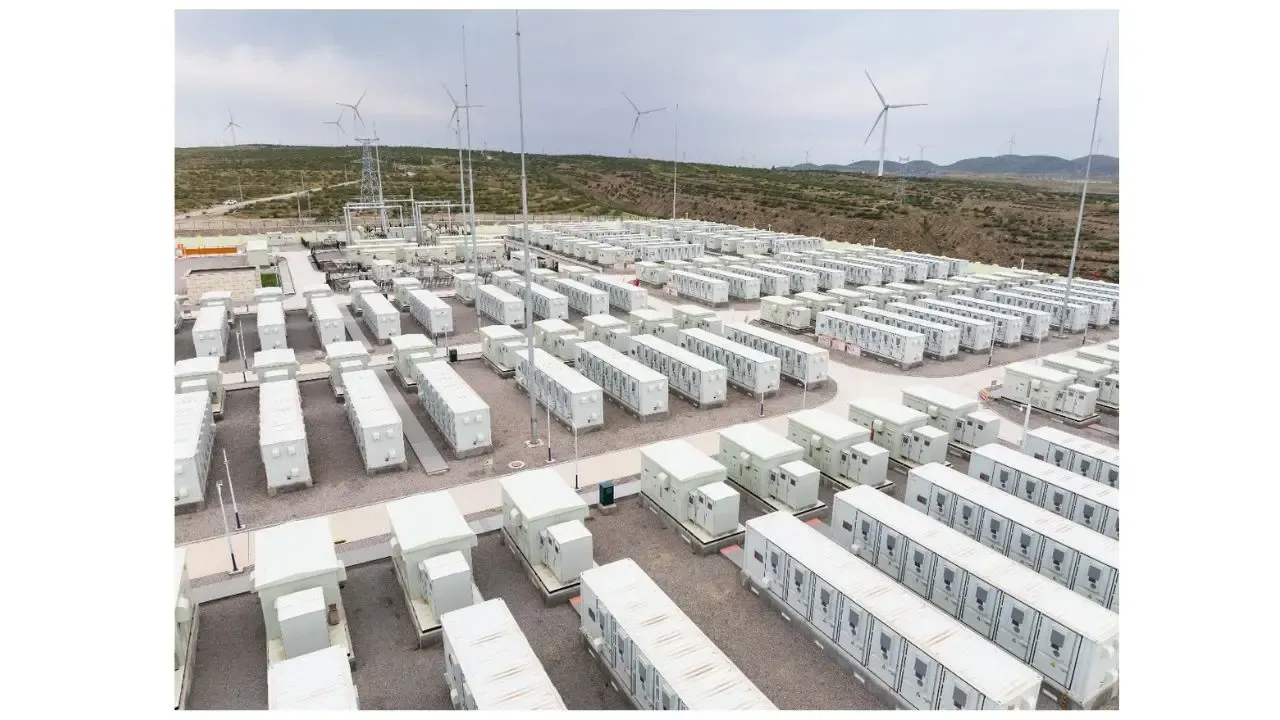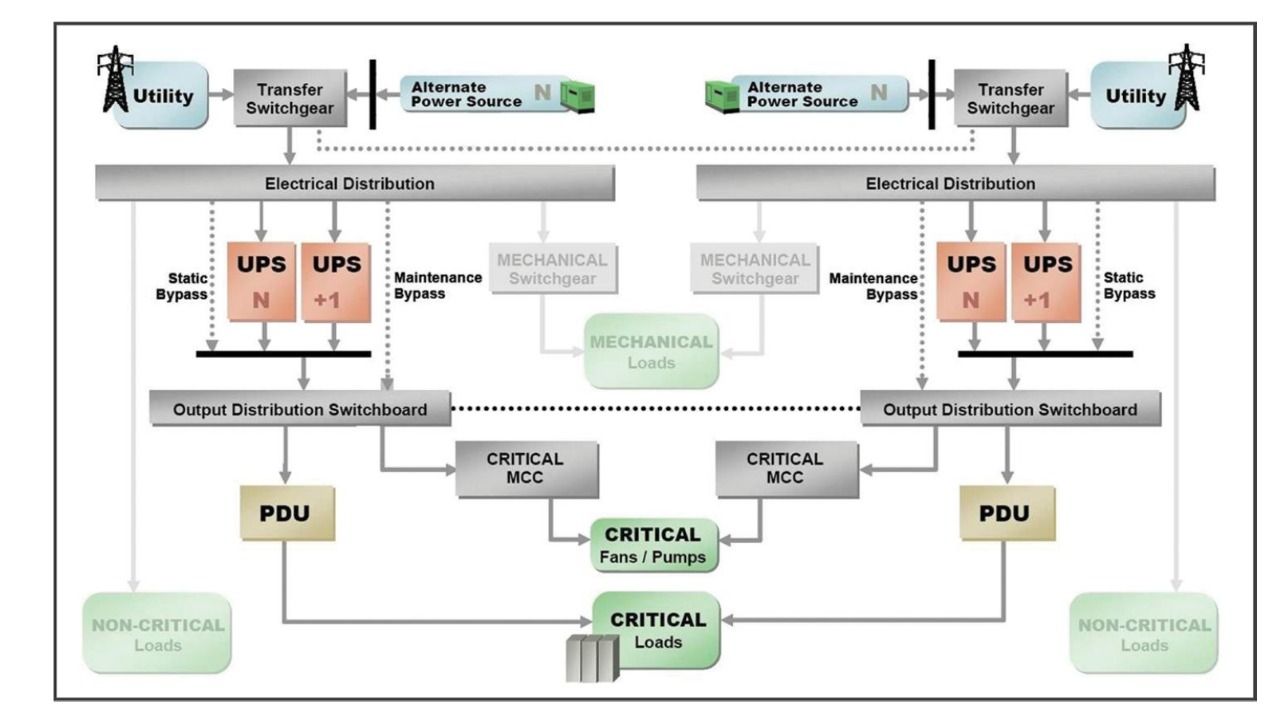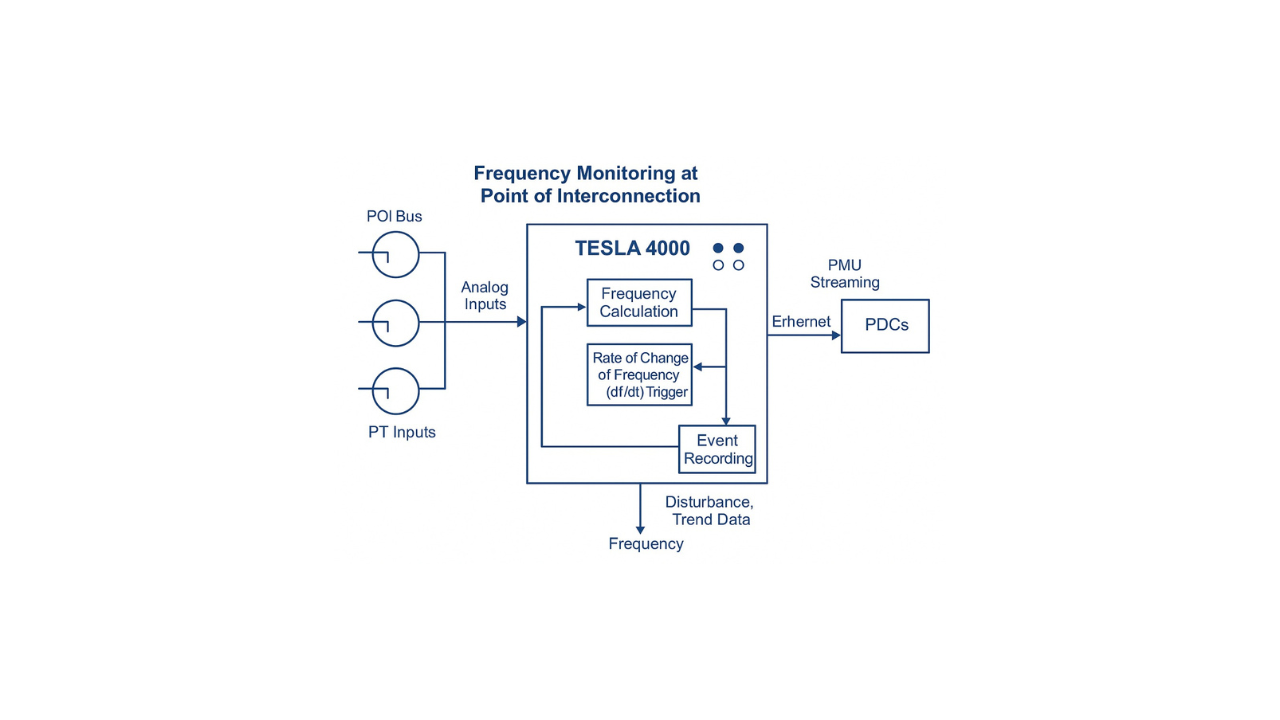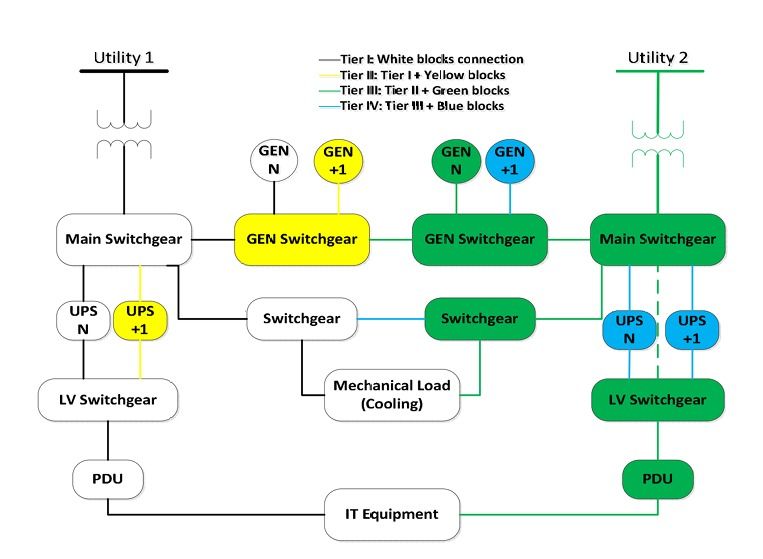A Coordinated Electric System Interconnection Review—the utility’s deep-dive on technical and cost impacts of your project.
Challenge: Frequent false tripping using conventional electromechanical relays
Solution: SEL-487E integration with multi-terminal differential protection and dynamic inrush restraint
Result: 90% reduction in false trips, saving over $250,000 in downtime
Ensuring Bulk Power System Reliability with MOD-032-2 & DER Modeling
July 15, 2025 | Blog
The evolving energy landscape—marked by a rapid increase in Distributed Energy Resources (DERs), regulatory reforms, and growing decarbonization targets—demands more robust power system modeling frameworks that accurately reflect DER behavior across both utility-scale and behind-the-meter systems. One critical step toward this goal is the refinement of data collection standards and guidelines, particularly the
MOD-032-2 Reliability Standard and NERC’s DER Data Collection for Modeling Reliability Guideline.
This blog delves into how MOD-032-2 aligns with the latest NERC DER modeling requirements and why precise, standardized data collection is indispensable for
transmission planning, dynamic system stability, and reliable BES operation.
MOD-032-2: Purpose and Key Updates
Evolution from MOD-032-1 to MOD-032-2
The MOD-032 series sets the standard for data submission needed for accurate power system modeling. MOD-032-2, issued in May 2023, enhances the applicability, clarity, and reliability of data submitted by Transmission Owners (TOs), Distribution Providers (DPs), and other entities to Planning Coordinators (PCs) and Transmission Planners (TPs).
One significant revision was the replacement of Load Serving Entity (LSE) with Distribution Provider (DP). This shift aligns with the
NERC Compliance Registry, which removed LSEs as a registered entity type. Consequently, data obligations that previously applied to LSEs are now directed at DPs, ensuring a clearer line of responsibility for data reporting.
DER-Focused Enhancements
The increasing penetration of DERs—including rooftop solar, battery storage, and smart inverters—has prompted
MOD-032-2 to explicitly incorporate DER-related data into its framework. Updates include:
- New DER data line item in Attachment 1
- Provisions for both Utility-scale DER (U-DER) and Behind-the-Meter DER (R-DER)
- Emphasis on aggregated DER data for modeling purposes
These revisions aim to integrate DER into transmission planning studies and ensure its impact on system behavior is not underestimated.
Clarifying Applicability and Definitions
Why MOD-032-2’s DER Definition Is Critical for Modeling Reliability
A key part of MOD-032-2 is its thoughtful and industry-aligned DER definition, drawing from NERC’s Glossary and the SPIDERWG discussions. It emphasizes:
- Facilities that produce active power
- Non-isolated parallel operation with the Bulk Power System (BPS)
- Exclusion of technologies like EV chargers or isolated generators
This clarity ensures that only DERs capable of impacting grid stability are subject to modeling requirements, avoiding overreach into DER types that pose negligible risk to BPS reliability.
MOD-032-2 and DER Data Collection: Interfacing with Reliability Guidelines
The Reliability Guideline: DER Data Collection for Modeling provides comprehensive support for MOD-032-2 compliance. Its primary goals are:
- Standardizing data collection formats
- Facilitating modeling practices that reflect actual DER behavior
- Bridging the gap between DPs and PCs/TPs
The guideline offers detailed tables, diagrams, and appendices that show the types of DER data required, such as:
- MW/MVAR ratings
- Control modes and settings
- Ride-through capabilities
- Voltage and frequency set points
It also promotes use of in-service dates to estimate compliance with IEEE 1547-based requirements.
Benefits of Standardized DER Modeling
1. Enhanced Grid Reliability
When DERs are modeled accurately, planners can simulate contingencies with greater precision. This allows for better visibility into:
- Voltage stability
- Frequency response
- Dynamic performance during fault conditions
2. Improved UFLS and UVLS Program Design
Accurate modeling of DER tripping behavior is critical for Underfrequency Load Shedding (UFLS) and Undervoltage Load Shedding (UVLS) programs. MOD-032-2 supports these programs by requiring DPs to identify:
- DERs subject to automatic disconnection
- Proportions of DER populations linked to various trip stages
3. Streamlined Planning and Interconnection
- With consistent and complete DER data, Planning Coordinators can build better interconnection
- wide base cases, ensuring that DER growth does not undermine bulk system performance.
This enables system planners to align with interconnection requirements under NERC and ISO/RTO frameworks, ensuring accurate forecasting and risk mitigation.
Practical Implementation Considerations
Aggregation vs. Individual DER Data
MOD-032-2 generally supports aggregated DER data to reduce the reporting burden. However, Footnote 4 gives PC/TPs discretion to request unaggregated data if local planning needs warrant it.
Best Practice: Coordinate early between DPs and PCs to clarify expectations on DER granularity.
Coordination Through Binding Agreements
For DPs or facilities not registered under NERC, MOD-032-2 expects TOs to coordinate data acquisition via:
- Interconnection Agreements
- Procurement Contracts
- Data Sharing MOUs
This ensures no DER-connected bus goes unmodeled, regardless of registration status.
Challenges and Gaps
Despite its clarity, several challenges remain:
- Variability in DER control logic across jurisdictions
- Limited observability of behind-the-meter assets
- Lack of consistent standards for feeder modeling tools
Additionally, many smaller utilities may struggle with the technical expertise needed to interpret DER behavior dynamically.
Smaller utilities may need external support or
modeling partners.
Next Steps for Utilities and Planners
1. Update Modeling Procedures
All registered entities should revise their internal modeling guides to include the new DER data types mandated by MOD-032-2 and outlined in the DER guideline.
2. Leverage the In-Service Date
Use the DER’s commissioning date to infer compliance with evolving standards (e.g., IEEE 1547-2018 ride-through requirements).
3. Train Staff on DER Modeling Tools
Invest in training on DER_A models, PSSE, PowerFactory, and TSAT tools to integrate DER characteristics into simulations.
4. Clarify Net vs. Gross Demand
MOD-032-2 clarifies that gross demand should be reported—not net demand. This avoids errors from misattributing DER production as load reduction, which can skew dynamic simulation results.
Final Thoughts
The MOD-032-2 update represents a crucial evolution in how we model modern electric grids. By prioritizing DER visibility and data accuracy, it enhances the ability of planners to safeguard reliability, resilience, and security in the face of a rapidly transforming energy mix.
Through consistent collaboration between DPs, TOs, PCs, and TPs—and using the detailed DER Data Collection Guideline as a roadmap—utilities can ensure that DERs are no longer blind spots in the planning landscape but active contributors to a stable, modern grid.
MOD-032-2 isn't just a compliance checkbox—it’s a foundation for future-ready power grid planning, improved dynamic simulation, and responsible DER integration at scale.
Frequently Asked Questions (FAQ)
1. What is the purpose of MOD-032-2?
MOD-032-2 standardizes the collection of data required for power system modeling and analysis, with updated emphasis on DER inclusion and TO/DP obligations.
2. Who is responsible for providing DER data under MOD-032-2?
NERC-registered Distribution Providers (DPs) and Transmission Owners (TOs) are required to provide data. If no DP is registered for a given facility, the connected TO is responsible.
3. What types of DER are in scope for modeling?
DERs that:
- Produce active power
- Operate in non-isolated parallel mode with the BES
- Are connected to a DP’s system
4. Are charging-only EV stations considered DER under MOD-032-2?
No. Since they only consume power and do not offset load or export to the grid, they are not considered DERs for the purpose of this standard.
5. Does MOD-032-2 apply to residential rooftop solar?
Yes, if the rooftop solar system offsets real power load and operates in non-isolated parallel with the grid.
6. Are DERs subject to NERC reliability standards?
No, DERs themselves are not. However, DPs/TOs must provide data about them for accurate transmission modeling.
7. What is the difference between U-DER and R-DER?
- U-DER: Utility-scale DER (e.g., large solar farms)
- R-DER: Retail or behind-the-meter DER (e.g., residential rooftop PV)
8. What data does MOD-032-2 require regarding DERs?
MW/MVAR capability, control types, voltage/frequency settings, ride-through behavior, and in-service dates.
9. What is the role of the in-service date?
It helps PCs infer DER compliance with standards such as voltage ride-through, based on when the asset was installed.
10. Is net demand acceptable for modeling?
No. Gross demand must be reported to maintain consistency when modeling DER behavior.
11. What is MOD-032-2 Attachment 1?
It specifies the data reporting requirements, now including DER-specific parameters for both steady-state and dynamic models.
12. Can DER data be reported in aggregate?
Yes, unless the PC/TP specifically requires unaggregated data per Footnote 4 in Attachment 1.
13. How do UFLS and UVLS relate to DERs?
DERs can trip during voltage or frequency disturbances, affecting load-shedding program effectiveness. Their behavior must be modeled accurately.
14. How is DER behavior categorized?
Behavior is categorized based on trip characteristics, ride-through compliance, and participation in system-level controls.
15. What tools can be used to model DERs?
Common tools include:
- PSSE
- TSAT
- PowerFactory
- EMTP
- DER_A and PVD1 models
16. Are isolated DERs subject to modeling?
No. DERs that only operate in isolated or back-up mode do not affect the BES and are excluded.
17. Can TOs shift the DER data collection burden to third parties?
Only if formal agreements (e.g., interconnection contracts) exist and the data flows reliably to the PC/TP.
18. How are older DERs without modern controllers modeled?
Via approximations based on in-service date and historical operational data. Aggregation may simplify the assumptions.
19. Does MOD-032-2 define modeling software?
No. It only defines what data is required, not how to model it.
20. How often must DER data be updated?
As needed per PC/TP procedures or when new DERs are installed or retired.
Get Expert Help from Keentel
Ready to strengthen your MOD-032-2 compliance and DER modeling process? Contact Keentel Engineering to discuss how our experts can support your data integration, validation, and modeling workflows.

About the Author:
Sonny Patel P.E. EC
IEEE Senior Member
In 1995, Sandip (Sonny) R. Patel earned his Electrical Engineering degree from the University of Illinois, specializing in Electrical Engineering . But degrees don’t build legacies—action does. For three decades, he’s been shaping the future of engineering, not just as a licensed Professional Engineer across multiple states (Florida, California, New York, West Virginia, and Minnesota), but as a doer. A builder. A leader. Not just an engineer. A Licensed Electrical Contractor in Florida with an Unlimited EC license. Not just an executive. The founder and CEO of KEENTEL LLC—where expertise meets execution. Three decades. Multiple states. Endless impact.
Services

Let's Discuss Your Project
Let's book a call to discuss your electrical engineering project that we can help you with.

About the Author:
Sonny Patel P.E. EC
IEEE Senior Member
In 1995, Sandip (Sonny) R. Patel earned his Electrical Engineering degree from the University of Illinois, specializing in Electrical Engineering . But degrees don’t build legacies—action does. For three decades, he’s been shaping the future of engineering, not just as a licensed Professional Engineer across multiple states (Florida, California, New York, West Virginia, and Minnesota), but as a doer. A builder. A leader. Not just an engineer. A Licensed Electrical Contractor in Florida with an Unlimited EC license. Not just an executive. The founder and CEO of KEENTEL LLC—where expertise meets execution. Three decades. Multiple states. Endless impact.
Leave a Comment
We will get back to you as soon as possible.
Please try again later.
Related Posts


